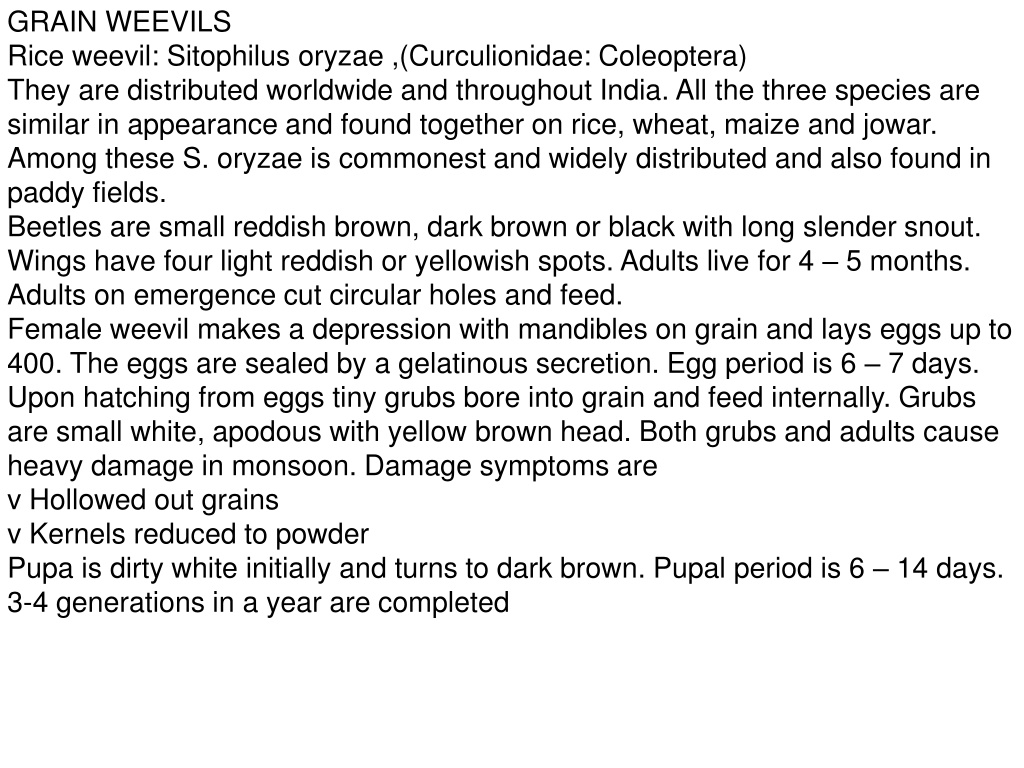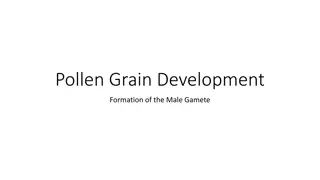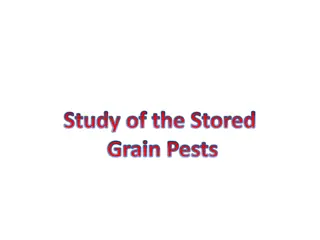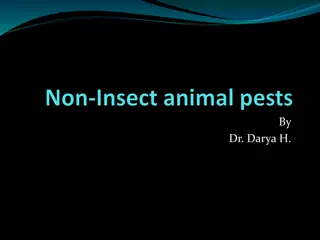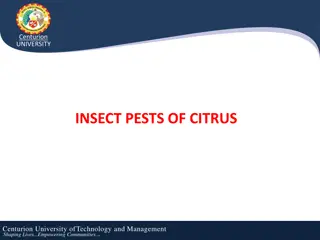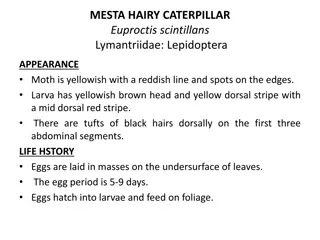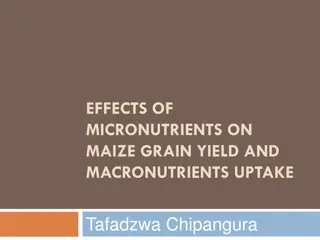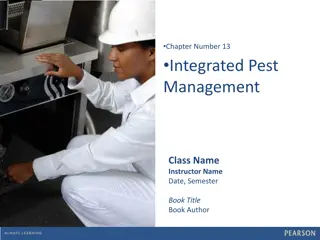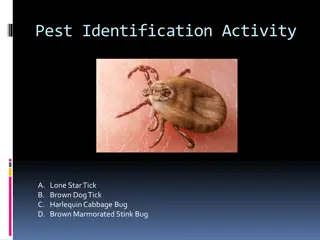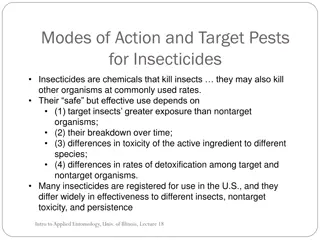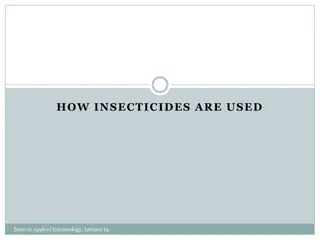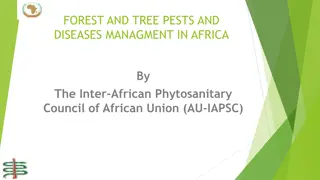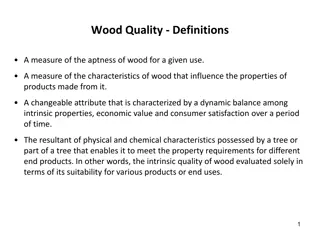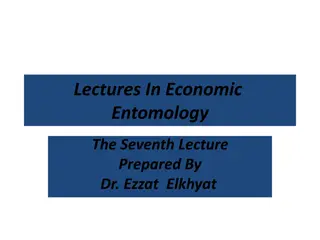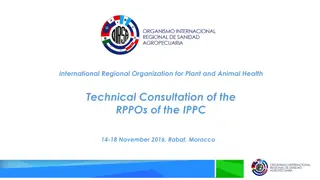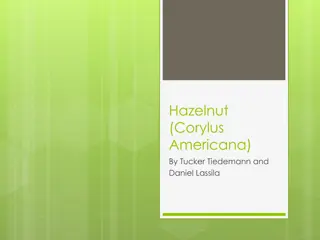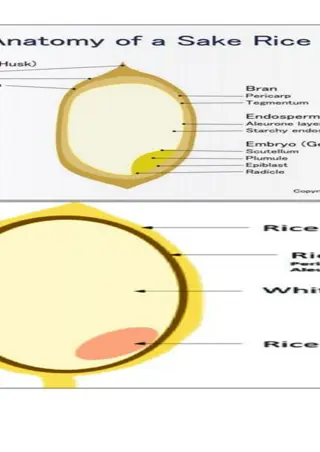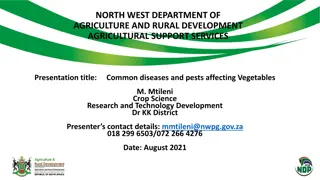Common Grain Pests and Their Characteristics
Grain pests like rice weevils, rice moths, pulse beetles, and flour beetles are a common nuisance causing damage to grains worldwide. These pests infest various grains including rice, wheat, maize, pulses, and flour products, leading to contamination and reduction of grain quality. Understanding their characteristics, life cycles, and damage symptoms is crucial for effective pest control measures in agriculture and storage facilities.
Download Presentation

Please find below an Image/Link to download the presentation.
The content on the website is provided AS IS for your information and personal use only. It may not be sold, licensed, or shared on other websites without obtaining consent from the author. Download presentation by click this link. If you encounter any issues during the download, it is possible that the publisher has removed the file from their server.
E N D
Presentation Transcript
GRAIN WEEVILS Rice weevil: Sitophilus oryzae ,(Curculionidae: Coleoptera) They are distributed worldwide and throughout India. All the three species are similar in appearance and found together on rice, wheat, maize and jowar. Among these S. oryzae is commonest and widely distributed and also found in paddy fields. Beetles are small reddish brown, dark brown or black with long slender snout. Wings have four light reddish or yellowish spots. Adults live for 4 5 months. Adults on emergence cut circular holes and feed. Female weevil makes a depression with mandibles on grain and lays eggs up to 400. The eggs are sealed by a gelatinous secretion. Egg period is 6 7 days. Upon hatching from eggs tiny grubs bore into grain and feed internally. Grubs are small white, apodous with yellow brown head. Both grubs and adults cause heavy damage in monsoon. Damage symptoms are v Hollowed out grains v Kernels reduced to powder Pupa is dirty white initially and turns to dark brown. Pupal period is 6 14 days. 3-4 generations in a year are completed
RICE MOTH Corcyra cephalonica Galleriidae: Lepidoptera It is distributed in Asia, N. America and Europe, pest on rice, gram, sorghum, maize, groundnut, cotton seed. Moth is pale buff brown coloured. Wing expanse is 25 mm, forewings with dark veins. It is bigger than other grain moths. Adult longevity is one week. Eggs are laid singly or in groups of 3 5 each on the grain. Egg period is 4 -7 days. Caterpillar alone is responsible for damage. It prefers partially damaged grains and feed. It pollutes food grains with frass, moults and dense webbing. In case of whole grains, kernels are bound into lumps up to 2 kg with the folowing v Grain converted to webbed mass v Damaged grain / flour with bad odour unfit for consumption. Larval period is 21 41 days. Pupa is in a silken cocoon. Pupal period is 9 14 days. Six genetrations per year are completed.
PULSE BEETLE Callosobruchus maculatus Bruchidae: Coleoptera It is a pest of gram, mung, peas, lentil, redgram, cotton seed, sorghum and maize. Brownish grey beetle with characteristic elevated ivory like spots near the middle of the dorsum of the body. Abdomen is conspicuously swollen. Elytra do not cover the abdomen completely. Every grain is infested. Female lays 30 100 @ 1 37 / day and one egg / grain. Egg period is 14 1 6 days. Young grub bores into the grain eat up the grain kernel and completes the development. Symptoms indicative of its infestation are v Damaged grain unfit for consumption. v Damaged grain converted to flour by traders give off flavour. Grub is fleshy, curved, white, creamy in colour, with black mouthparts. It moults four times. Grub period is 10 12 days but hibernation in winter is for 117 168 days. Full grown grub lies at periphery next to seed coat and pupates. Pupa is oval in shape and white in colour. Pupal period is 4 28 days. 7 8 overlapping generations are completed per year.
FLOUR BEETLES Rust red flour beetle Tribolium castaneum Tenebrionidae: Coleoptera They are of worldwide distribution, common in wheat flour. They also feed on broken grains, milled products, dry fruits, pulses Beetles are small,reddish brown or brick red beetles, smooth and 3.5mmlong. T. castaneum: More common with functional wings, antennae gradually thickened, 3 segmented. T. confusum: Without functional wings antennae suddenly bulged and. White cylindrical sticky eggs are laid loosely in grain or flour. Fecundity is 400 500 eggs/female. The grub is worm like, white creamy and turns to reddish yellow and hairy. Faint stripes and two spine like appendages are present at the end segment. Length is up to 5 mm. Larval period is 3-12 weeks. Both adults and larvae are incapable of feeding on sound grain. They damage milled products. Flour beetles are secondary pests of all grains and primary pests of flour and other milled products. In grains, embryo or germ portion is preferred v Flour greyish and mouldy giving disagreeable odour. Pupation loosely in the grain and pupa is naked. Pupal stage lasts 5-9 days. Life cycle is completely in 4 5 weeks
House hold pests 1. Ants House ants viz., Monomorium criniceps (small brown ant) and M. destructor (small red ant) is a problem in household carrying bits and pieces of food material. They cause annoyance and also sting people causing disturbances. They can be controlled by keeping the house clean and tidy. Chemical control can be done with dusting of carbaryl 10 per cent (not advisable if infants live in the houses) 2. Termites Termites feed on wood, paper, wood products, dried plant and animal products etc., To prevent infestation by termites, avoid construction of any wood material 40 cm from ground surface. A thin sheet of metal or good concrete between foundation and timber of the house will prevent infestation. Termite proofing of wood can be done by pressure impregnation with coal tar, zinc chloride, chlorpyrifos etc., Soil termite attack can be controlled by spraying of chlorpyrifos 20 EC @ 50 ml/ liter of water.
4.Cockroach Periplanata Americana; (Blattidae; Dictyoptera) Well known insect in all households. They are nocturnal i.e.,active in nights mostly in places which are damp and dark and avoid light. They cause nuisance in the household with their foul smelling excreta. The female cockroach produces ootheca containing 14 to 16 eggs and about 15 to 90 oothecae may be laid by a female. These insects can be controlled by application of propoxur (Baygon) 0.5 %. Aerosols containing propoxur 0.75 % + cyfluthrin 0.025% 5. Cricket Gryllus spp. (Gryllidae; Orthoptera) These insects live in cracks and crevices in the houses and causes annoyance by making chirping noise at nights. With proper ventilation and lighting, these insects can be controlled.
